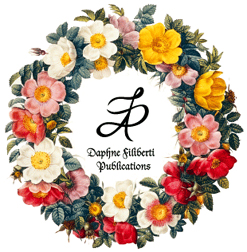Wilhelm Keller's rare rose catalogues from 1828, 1829 and 1833 now available
 This review first appeared at Chez Vibert and was graciously provided by Brent Dickerson: 'One of our new members, Harald Enders, did me the favor of bringing
to my attention a new book which was recently published by
another of our members, Daphne Filiberti. It is a facsimile reprint
of the rose catalogs for 1828, 1829, and 1833 of Wilhelm Keller of
Duisburg-am-Rhein. I have now had an opportunity to pore over this
book--indeed, for the last week, I have done little else! It is of
very great interest, detailing varieties available during one of the
richest periods of rose hybridizing. As it overlaps Desportes and
Prevost and, with the 1833 catalog, gives us a stepping-stone between
Desportes/Prevost and Boitard/Gore, we can gain some perspective
which we didn't have before. All but a very few varieties have the
color of the blossom indicated; some interesting or new varieties
have a sentence or two or three.
This review first appeared at Chez Vibert and was graciously provided by Brent Dickerson: 'One of our new members, Harald Enders, did me the favor of bringing
to my attention a new book which was recently published by
another of our members, Daphne Filiberti. It is a facsimile reprint
of the rose catalogs for 1828, 1829, and 1833 of Wilhelm Keller of
Duisburg-am-Rhein. I have now had an opportunity to pore over this
book--indeed, for the last week, I have done little else! It is of
very great interest, detailing varieties available during one of the
richest periods of rose hybridizing. As it overlaps Desportes and
Prevost and, with the 1833 catalog, gives us a stepping-stone between
Desportes/Prevost and Boitard/Gore, we can gain some perspective
which we didn't have before. All but a very few varieties have the
color of the blossom indicated; some interesting or new varieties
have a sentence or two or three.
I have gone over the listings line by line. The book adds to rose
knowledge by allowing us to focus many many dates of introduction,
usually by a year or two, or perhaps a decade; but in several
instances a variety has gone from "-1885" or "date unk." to "-1833." Additionally, some varieties for which I had previously found no
description whatsoever had a word or two of description in the Keller
catalogs. In some cases in which Keller happens to give a synonym,
it has allowed me to conflate two seeming varieties into one. In
some cases, names or classifications can be corrected or adjusted.
The researcher will find a delightful challenge in using the Keller
catalogs. 1828 and 1829 are in the old black-letter German typeface,
which takes some getting used to. The descriptions in all cases are
of course in German; it will perhaps surprise some that Keller has
given us almost all of the rose-names in German as well. While this
doesn't make any difference for such as 'Athalin' or 'Delaâge',
the reader must be prepared to exercise his ingenuity when confronted
by unfamiliar names such as 'Die Himmelskugel' or 'Die Jungfrau'
('Die Himmelskugel' is the Gallica 'Eucharis'; 'Die Jungfrau' is the
Noisette 'La Mignonne').
As an example of how the Keller catalogs have provided new
information, I can report that we can now be certain that the well-
known China 'Fabvier' is -1829 rather than the 1832 which is usually
seen. The important 'Quatre Saisons Blanc Mousseux' is -1833; the
China 'Louis-Philippe', previously and universally assigned to 1834,
is also demonstrably -1833 now.
We find, as well, many new varieties. One which we can enter in
the "long rose-name" competition would be the Hybrid Noisette 'Thisbe
mit Gelb- und Grüngestreifter Rinde und Bunte Blättern'
(evidently a
sport of the Hybrid Noisette 'Thisbe').
As I mentioned, in a few cases a variety is given several lines of
description. Here, for instance, is a welcome description of what we
know as the Bourbon 'Rose Edouard': "Blossom medium-sized, salver-form [i.e., flat], double, bright and shining deep pink. Hip longly
ovate, glabrous and gray-green" (my own translation from Keller's
German).
This is a useful book; and, further, it is a fine, worthy, and
commendable thing to go to the trouble and expense of publishing such
material. Thanks so much, Daphne! And thanks, Harald, for letting
me know about it!'
Please contact me for more information:
daphne@rosegathering.com
©2000-2005 Daphne Filiberti
www.RoseGathering.com
|













